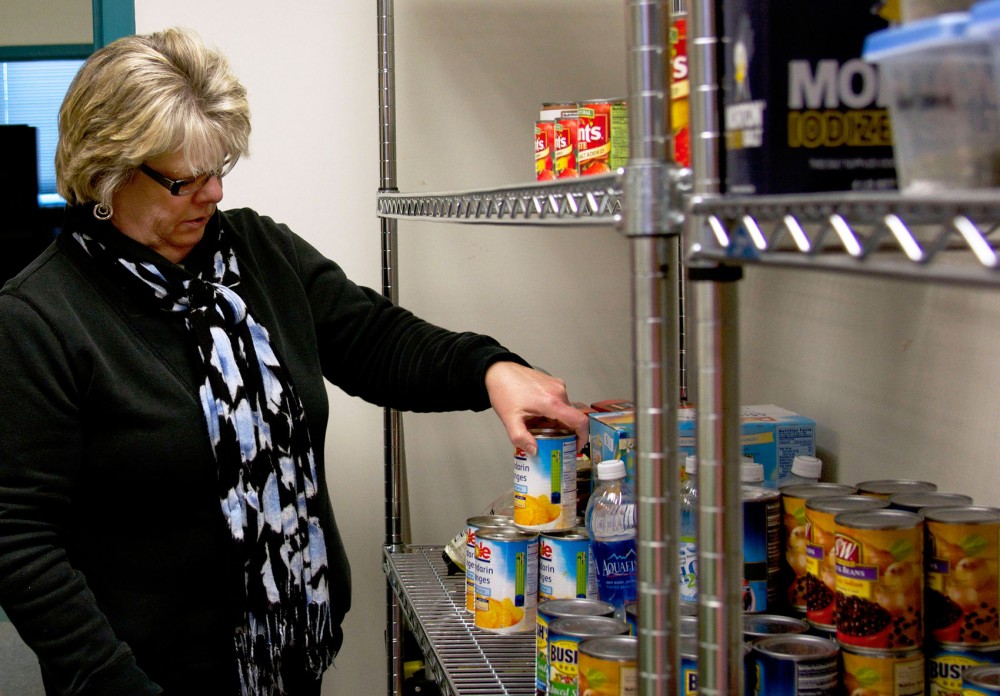University of Minnesota Extension laid off about 44 percent of its Supplemental Nutrition Assistance Program Education employees on Jan. 14 in response to diminishing funding.
Until now, University Extension has avoided layoffs in SNAP-Ed, which works in tandem with the government program formerly known as Food Stamps. The program educates low-income people who are on a limited budget about active lifestyles and healthy choices.
Before the cuts, 109 community nutrition educators worked with Minnesota’s 87 counties, with at least one part-time educator in almost every county. Now, some educators may have to cover up to four counties.
University Extension Dean Beverly Durgan said the program relies almost entirely on its employees to fulfill the needs of low-income citizens throughout the state.
“Doing this reorganization and thinking about employees was the hardest thing I’ve ever had to do as dean, and I’ve been dean for eight years now,” she said.
A 28 percent cut to the federal American Taxpayer Relief Act in January 2013 and the lack of a current Farm Bill have reduced the SNAP-Ed program’s stability.
During the past year, University Extension cut costs and exhausted all additional funding to avoid layoffs. The money has now run out, Durgan said, and they have no more room to save.
Antonio Alba Meraz, Mankato county family resource management extension educator, often directs families he works with to SNAP-Ed. While he works outside of the program, Meraz said he doesn’t yet know the specifics of how the new regional structure will work.
“It will be very important for me and for all Extension employees to know how the new structure will work, so we will be more able to refer people to those benefits,” he said.
The change won’t be drastic in metro areas like Hennepin County. Another source of federal funding that Extension utilizes, the Expanded Food and Nutrition Education Program, dictates that areas of higher population — particularly those of low-income mothers and children — receive
higher funding.
But less-populated areas of the state will see less education.
“We’re not kidding ourselves, and we’re not promising that we are going to be able to do the same work,” Durgan said. “We have less money. We have less people.”
Instead of working one-on-one with families, educators will have to rely more heavily on collaboration with food shelves and their volunteers, Durgan said.
But Erin Ostrowski, a newly hired SNAP regional educator in Ramsey County, said she has faith in the program’s ability to reach those in need.
“I think we’re going to consider more effective programing and considering working with more agencies,” she said. “I’m looking forward to new partnerships and seeing everyone we will be able to reach.”
One example of a statewide effort to improve healthy food access is the Minnesota Food Charter document, which recently concluded a public input process for its latest draft.
The charter doesn’t provide nutrition information. But many groups involved in the project have worked with Extension in the past to outline strategies to reduce barriers for SNAP-Ed participants by describing them in the document, said Margaret Adamek, of Terra Soma, LLC, which provides design and execution support for the charter.
Those skeptical of SNAP-Ed’s success pushed for its decreased funding, Durgan said, but course evaluations show it has influenced healthier choices in low-income families.
Participants in SNAP-Ed courses — who numbered 63,000 last year — said they increased their consumption of fruits and vegetables by more than one-third of a cup.
Some among the 67 of 152 employees who won’t be returning to their jobs had been members of SNAP-Ed since the program began.
The department has worked to hire internally before advertising the jobs outside Extension, Durgan said.
“Our [Community Nutrition Educators] were involved in the communities and worked with the communities,” Durgan said, “and they will be missed.”


